The Best Ideas from COP30, the UN Climate Summit in Brazil – 18 December 2025
The Clean Coalition was a partner organization for this webinar, which took place on 18 December 2025 at 10am.
Read More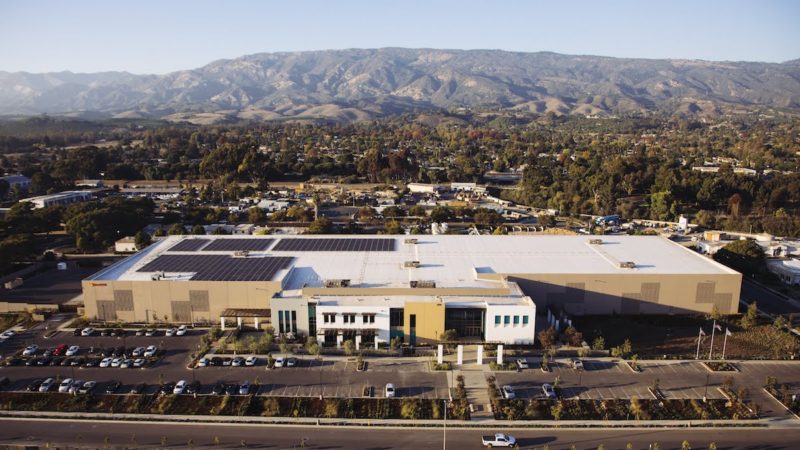
Key examples of microgrids in California and across the nation
This page highlights some of the top microgrids around California and the US as of 2020. While the list is not meant to be exhaustive — as microgrids are being deployed with increasing frequency — it provides a sampling of microgrids around the country.
The Clean Coalition is designing and staging a number of microgrids around California, such as our Goleta Load Pocket Community Microgrid, Solar Microgrids for the Santa Barbara Unified School District, a Residential Solar Microgrid, and more.
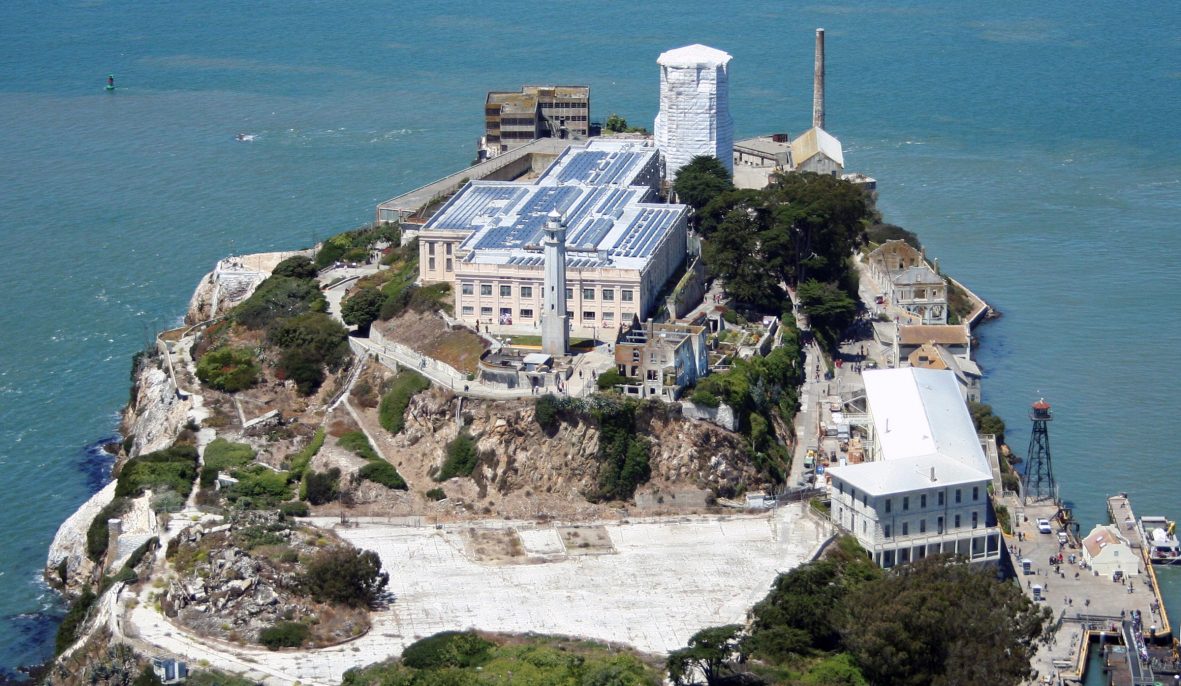
Key Alcatraz Island Microgrid features:
The challenge of powering Alcatraz was one of the reasons it closed in 1963, after 29 years of operation. With no access to outside power lines, the National Park service ferried up to 2,000 gallons of diesel fuel a week to Alcatraz to power its electric generators. A 2008 greenhouse gas inventory performed by the Golden Gate National Recreation Area found that generators on Alcatraz Island produced more than 632 metric tons of carbon dioxide — nearly half of the total electricity generation emissions for the entire park. Alcatraz’s 22-acre site, located in the middle of the San Francisco Bay, is now home to one of the nation’s largest microgrids. This $7.1 million project, originally funded through the American Recovery and Reinvestment Act, has reduced the island’s fuel consumption by 45% since its 2012 installation. It also saves more than 25,000 gallons of diesel fuel a year.
Other
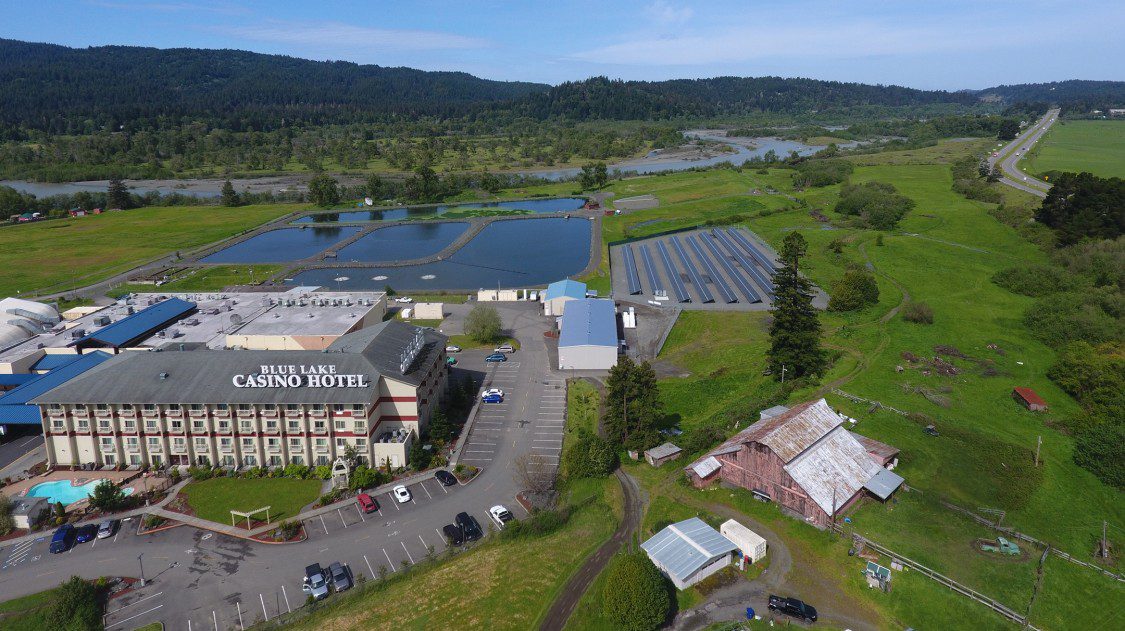
Key Blue Lake Rancheria Microgrid features:
The Blue Lake Rancheria (BLR) is located in California’s Humboldt Bay community and houses tribal government offices, electric vehicle charging, a convenience store and gas station, a hotel and casino, and energy and water systems — including a low-carbon microgrid. Together, these facilities serve as an American Red Cross emergency evacuation site, and the Tribe was recognized by the Federal Emergency Management Agency in 2017 for their whole community preparedness efforts. This rural region sits at the junction of three tectonic plates and is subject to heavy rainstorms, forest fires, and frequent power outages. The BLR microgrid integrates a solar array, battery storage, and control systems to allow the Rancheria campus to operate in tandem with or islanded from the main utility grid. The BLR microgrid was funded by a grant from the California Energy Commission (CEC), and the Schatz Energy Research Center was the prime contractor and lead technology integrator for the project.
BLR staff have determined five priority levels for campus energy loads, which their operators can choose to “shed” (turn off) in the event of an extended power outage. Non-essential load shedding would allow the microgrid to operate indefinitely during an outage.
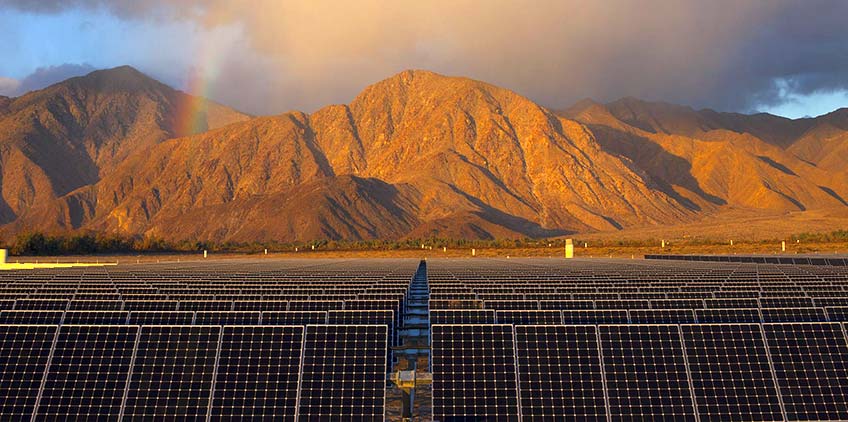
Key Borrego Springs Microgrid features:
San Diego Gas & Electric set up the Borrego Springs Microgrid in 2013 to improve energy resilience for the roughly 2,800 people in Borrego Springs, which is served by a 60-mile power line that is subject to outages because of storms, fires, and high temperatures. This first utility-owned microgrid uses Smart Grid technology — including local power generation, local energy storage, and automated switching — to create a more robust, resilient grid that can dynamically react to changing environmental and system conditions. The Borrego Springs microgrid is connected to the main grid but can disconnect and function independently during emergencies, supplying vital electricity to the local community through its onsite resources.
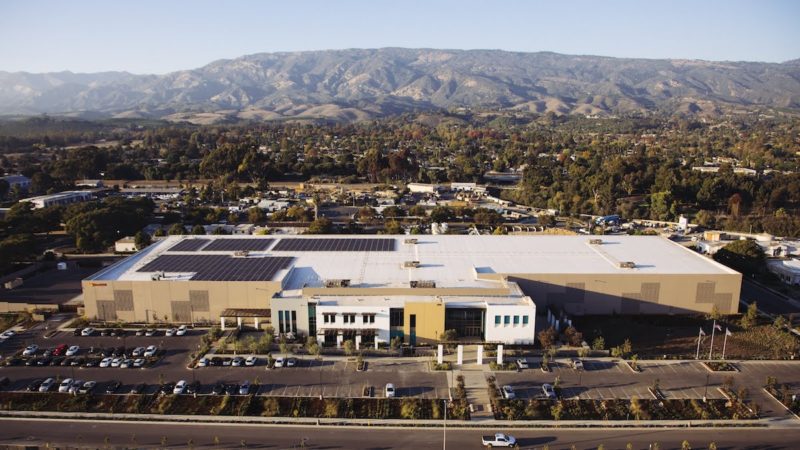
Key Direct Relief Microgrid features:
Direct Relief, a globally recognized organization, serves its life-saving the mission to improve the health and lives of people affected by poverty or emergencies from its headquarters in Santa Barbara, California. There, Direct Relief runs the largest distribution hub for humanitarian medical aid in the US, with a state-of-the-art warehouse and logistics facility. Its global logistics operations, including a large stockpile of temperature-sensitive, life-saving medical supplies, depend on electricity.
But the facility’s location in the Goleta Load Pocket (GLP) — a disaster-prone stretch of California coastline served by just one transmission path routed through 40 miles of mountainous terrain — leaves Direct Relief vulnerable to power outages.
Direct Relief engaged a third-party microgrid provider to install, own, and operate a Solar Microgrid. Through a power purchase agreement (PPA), Direct Relief contracted to have the microgrid installed at no upfront cost to them, in exchange for consuming all the energy produced by the Solar Microgrid at a set price. Direct Relief only pays for delivered solar energy, so the Solar Microgrid needs to deliver energy in order to earn PPA payments from Direct Relief. For more, read our Direct Relief case study.
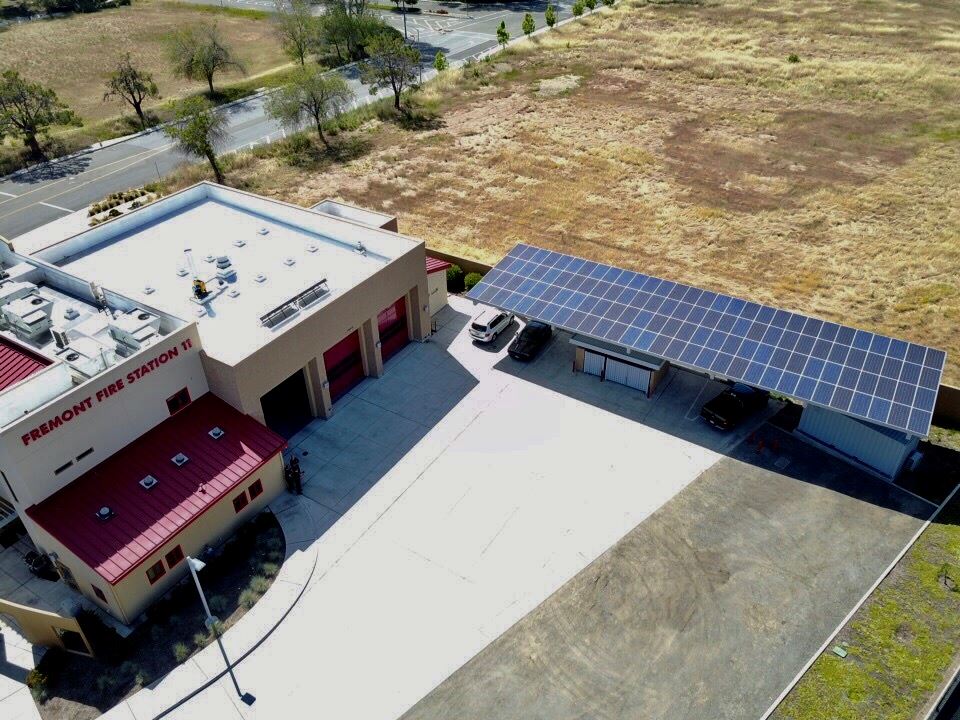
Key Fremont Fire Station Microgrids features:
Three fire stations (6,7, & 11) in Fremont have been equipped with solar carports and large battery systems to increase their energy resilience and bolster their capacity to operate during power outages. This combination of solar panels and batteries allows each station to generate and store its own energy with the ability to island from the grid in case of power outages. City staff are able to monitor generation and usage via cloud-based energy management software.
Fire station microgrids provide multiple benefits to the city and community: reducing energy demand on the grid via storage technology, protecting critical facilities against power outages, supporting local innovation and entrepreneurship, increasing community resilience, saving money, and reducing carbon emissions.
This project is a public-private partnership between the City of Fremont, the Fremont-based clean technology firm Gridscape Solutions, and the California Energy Commission (CEC).
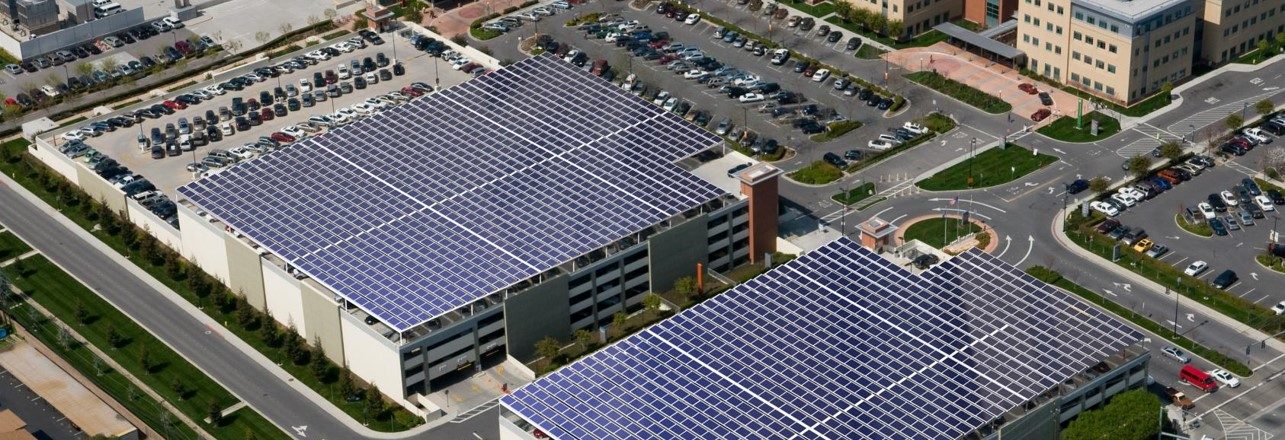
Key Kaiser Permanente Richmond Medical Center Microgrid features:
Kaiser Richmond Medical Center is the first hospital in California to implement a renewables-fueled microgrid. The engineering firm Mazzetti worked directly with Charge Bliss, the primary energy consultant and developer, to design and engineer the microgrid. The CEC’s Electric Program Investment Charge (EPIC) program, provided a $4.77 million grant to fund this project.
This project provides a potential model for future healthcare infrastructure, and of the benefits of islanding as a reliable backup power source. Pending the performance of this project, the Office of Statewide Health Planning and Development (OSHPD) will evaluate and determine feasibility to allow microgrids for other hospitals in California.
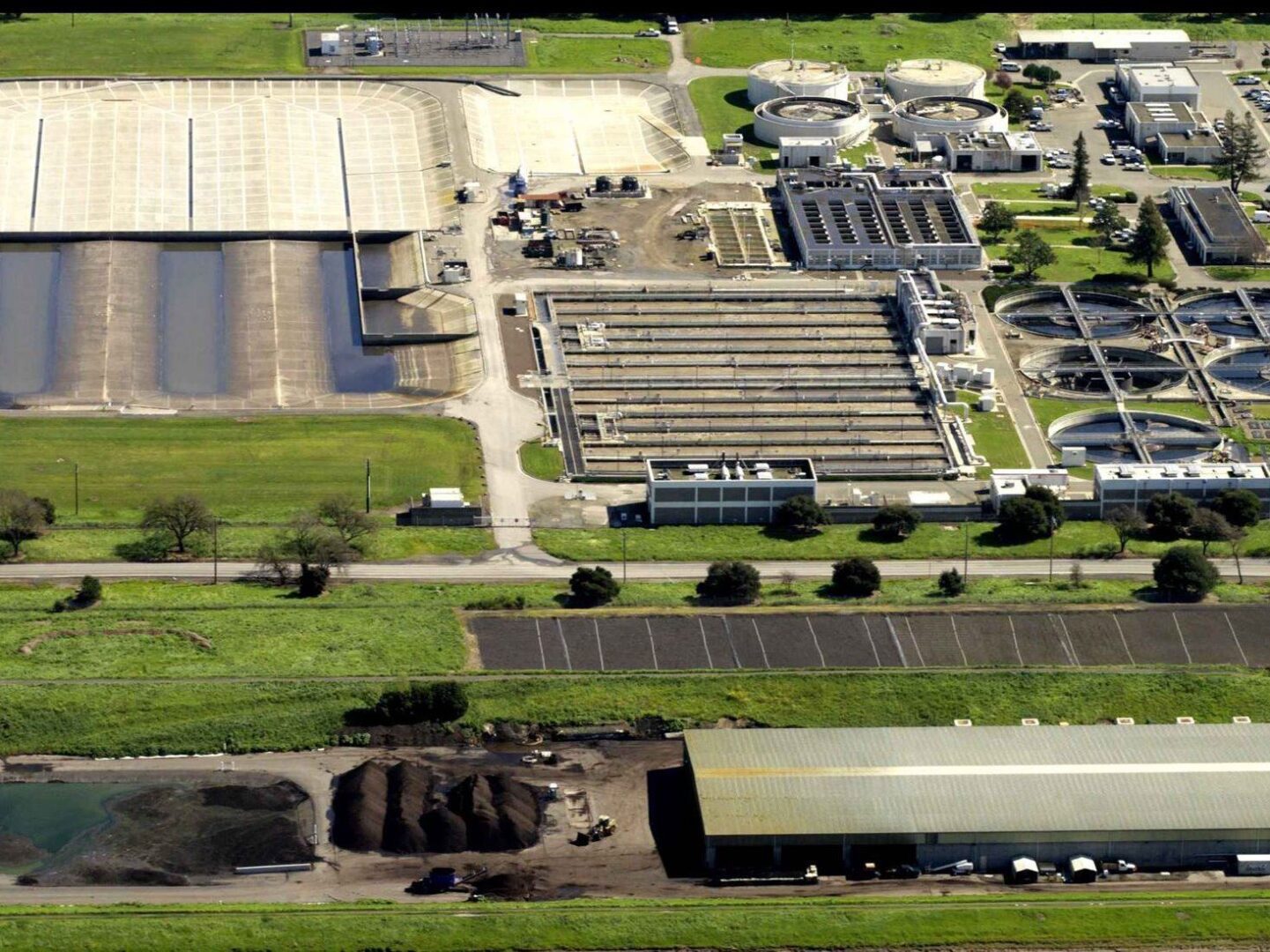
Key Laguna Wastewater Treatment Plant Microgrid features:
Located at the city of Santa Rosa’s Laguna Wastewater Treatment Plant, this microgrid project will improve plant operations and grid resilience for Santa Rosa and the surrounding region. The microgrid is connected to the Pacific Gas & Electric (PG&E) distribution grid at 69 kilovolts through a computer-controlled circuit breaker and is designed to operate autonomously. The Tubbs fire in October 2017 caused major damage to the areas surrounding Santa Rosa, resulting in delays in the project approvals while the city dealt with a major catastrophe in the area. Several critical suppliers, such as Alstom and Tesla, back out of the project; they were replaced by Nuvation Energy and Parker Hannifin. Despite project difficulties, the CEC granted a project extension to 31 March 2019, and the project was completed.
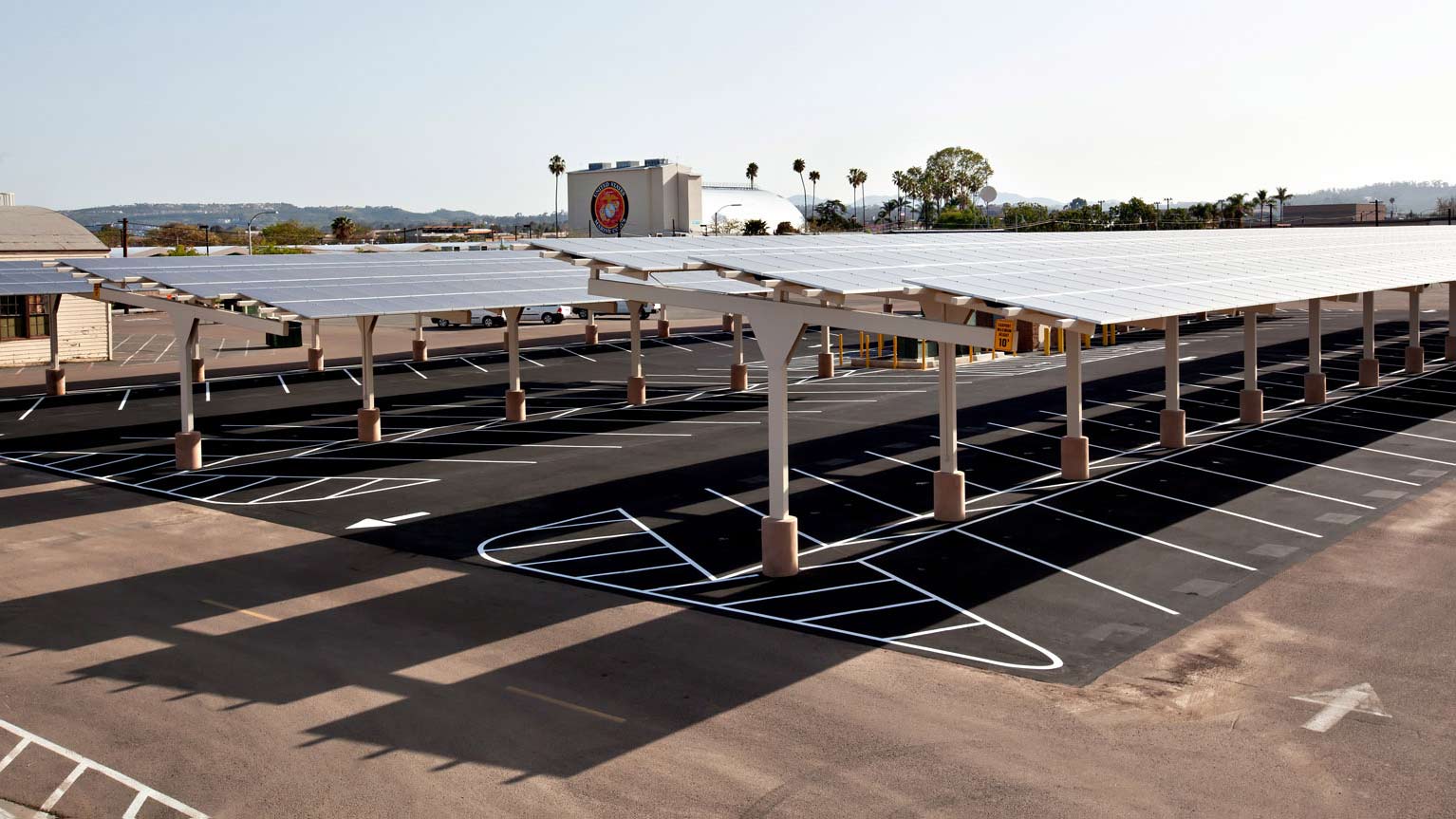
Key MCAS Miramar Microgrid features:
In 2011, a blackout in San Diego, California, left Marine Corps Air Station (MCAS) Miramar without power for eight hours, highlighting the need for increased energy security, which the new microgrid will provide.
The MCAS Miramar Microgrid is a multifaceted microgrid, including solar, energy storage, and hybrid electric vehicles that can provide power to buildings. The microgrid powers the base’s 100 mission-critical buildings, including its entire flight line, even during a power outage. This microgrid also features an intelligent controller for tapping into diverse energy sources — such as solar , landfill gas, natural gas, energy storage, and diesel fuel — while maximizing use of existing renewable energy. The microgrid can run in island mode when disconnected from the grid, or in “economic mode” to reduce the base’s utility bills and support the grid for the community. In addition to the energy savings, the system can cut demand charges, with savings adding up to $41,600 a month.
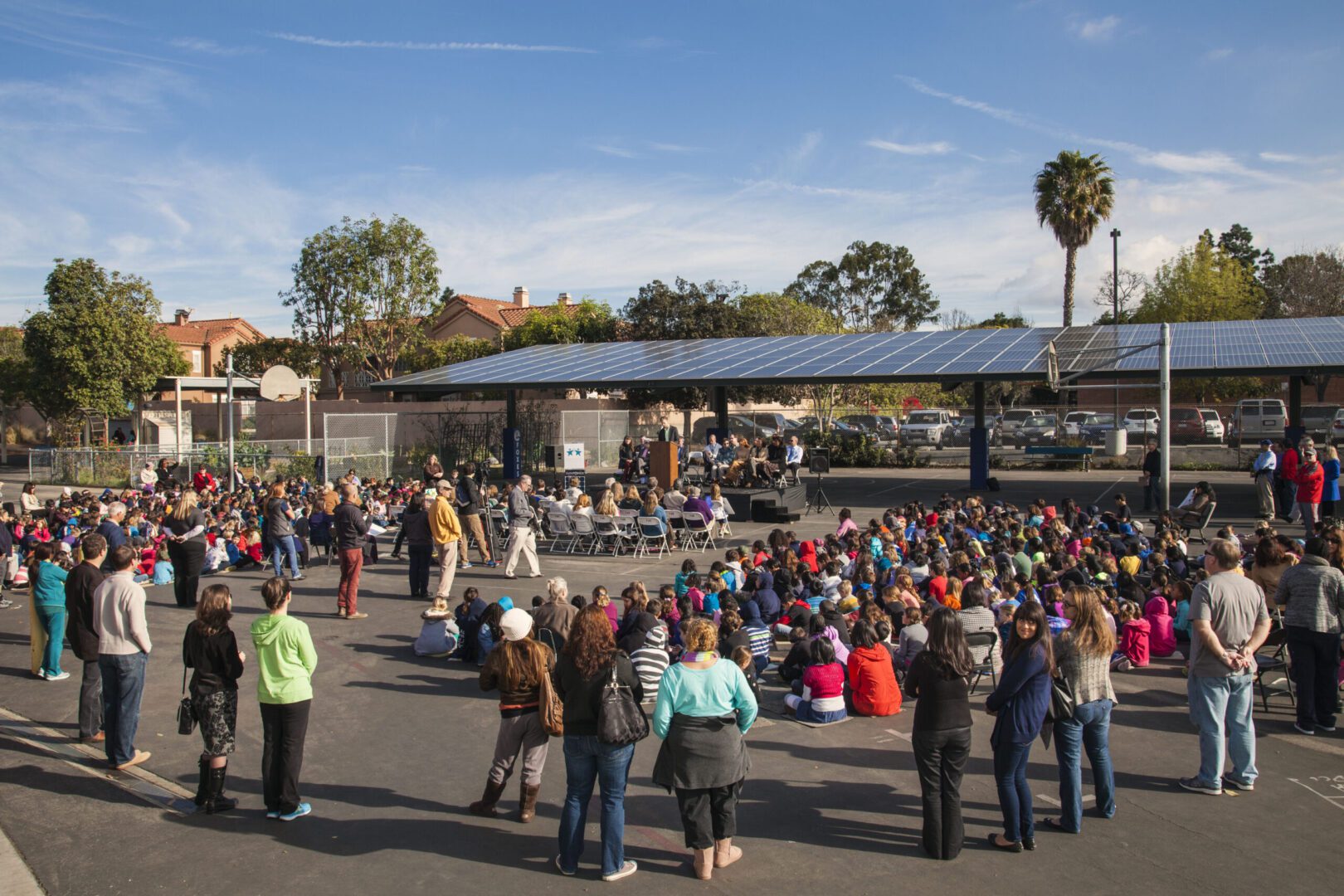
Key Santa Rita Union School District Microgrids features:
The Santa Rita Union School District serves about 3,400 students near Salinas, CA. The District sees power outages fairly regularly because of its rural location with a constrained grid in the Monterey Bay area. In 2016, school leadership looked into getting backup power, and while they considered diesel generators they decided to take a cleaner path. Santa Rita Union installed solar+storage at seven of its schools. The solar savings generated by net metering are being used to repay the cost of the system. The storage can discharge for up to seven hours, while the solar will recharge the storage every day, allowing the system to provide power indefinitely. The middle schools are designated emergency shelters; the microgrid allows community members to sleep in the gym, get medical care, and charge their devices. Students can also keep attending school during long power outages and continue receiving daily meals, an important service to the community.
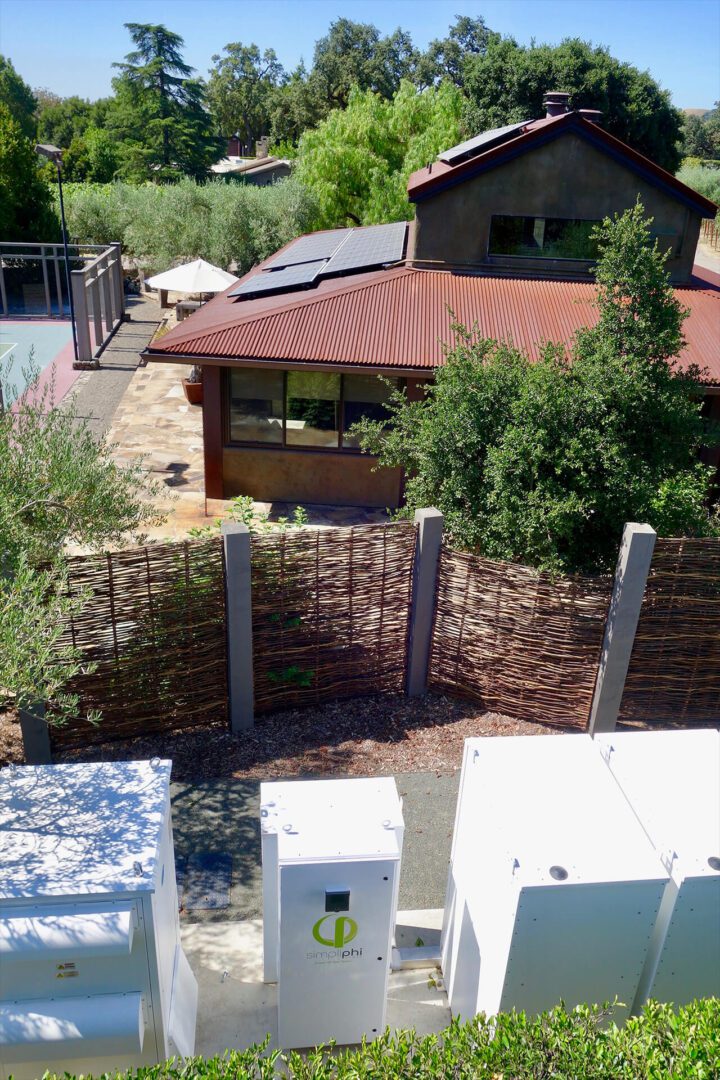
Key Stone Edge Farm Microgrid features:
Stone Edge Farm consists of four venues in and around Sonoma, California. Just steps from the historic plaza is EDGE, a private dining room and culinary home of the Collectors Cellar, their own wine club. To the west lies a 16-acre organic farm, the McQuown family residence. Due north, their mountain vineyard, Silver Cloud, spreads across the high slopes of the Mayacamas range. And their world-class winemaking facility stands a few miles southeast of town.
The Stone Edge Farm MicroGrid encircles the property with a variety of interconnected electrical generation, storage, and consumption devices. The distributed energy resources (solar panels, microturbine, fuel cell hives) produce power that can be consumed directly by loads (irrigation pumps, buildings) or stored by several assets (batteries, hydrogen) for later use. The microgrid unites seven electrical services on five formerly separate parcels that constitute the farm. Stone Edge Farm comprises 16 buildings on 16 acres.
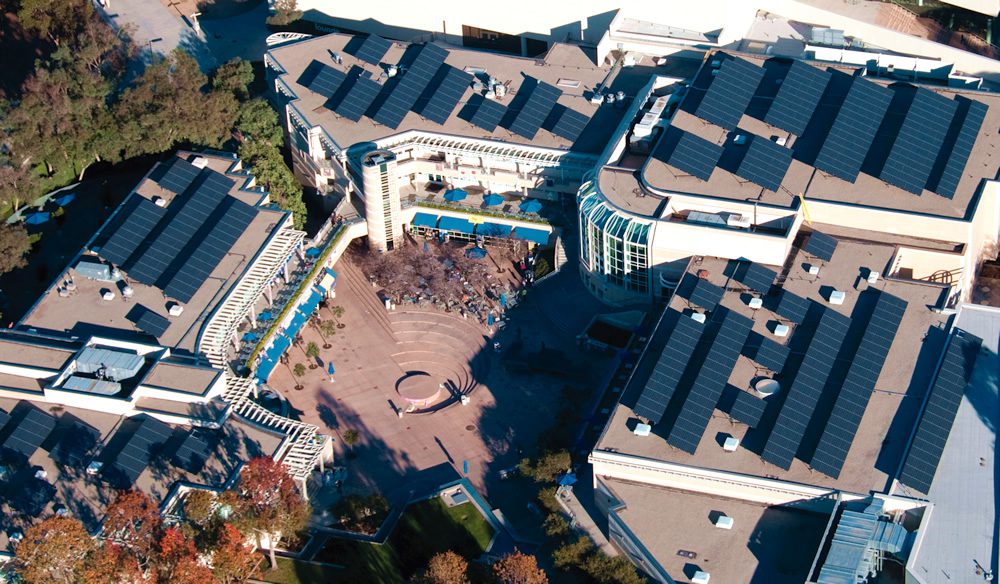
Key UCSD Microgrid features:
Built in stages over decades, the UCSD Microgrid now powers a campus that covers 1,200 acres and serves a community of about 45,000 faculty and students living and working in 450 buildings. UCSD generates about 79% of its own energy, at about half the price that utility power would cost — adding up to millions of dollars in savings each year. That level of contribution to its own power supply is even more impressive considering that the campus has an energy density three times greater than average commercial properties because of its supercomputing center, research laboratories, and hospital. The remaining power is supplied by the local utility, San Diego Gas & Electric (SDG&E). The total peak demand is 47 MW, expected to grow to 80 MW in the future. The mission-critical requirements of its health facilities, laboratories and computing centers mean that the UCSD power system requires 60 MW of fail-safe emergency backup power supplied by diesel generators, only permitted to operate in emergencies as backup to the backup.
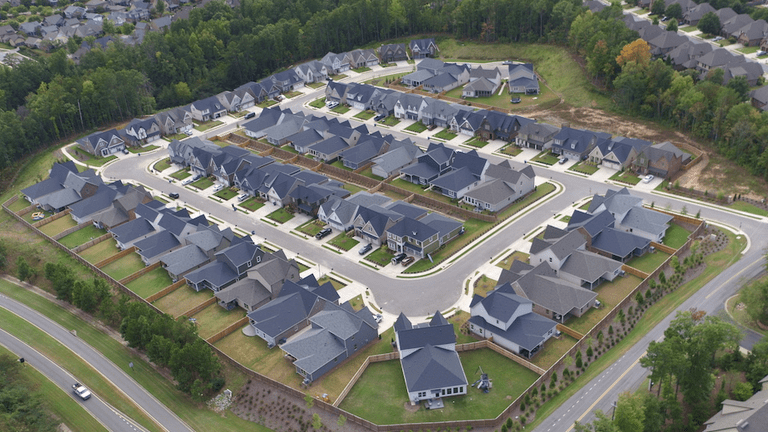
Key Smart Neighborhood features:
Alabama Power, a subsidiary of Southern Company, launched a smart neighborhood providing customers with state-of-the-art home construction, distributed energy resources, and smart home appliances and technologies. The Smart Neighborhoods — located in the Birmingham suburb of Hoover — were built as part of Southern Company’s research initiative to determine what homes and smart home automation will look like in 2040. The homes in these communities are among the most energy-efficient in the country, with improved reliability, increased use of distributed energy resources, and decreased operating costs. Each home is built to include either a community-scale microgrid or rooftop solar panels and battery energy storage, as well as a super-tight building envelope, comprehensive duct-sealing, triple-pane windows, a radiant barrier roof decking, smart thermostats, connected and controllable heat pump water heaters, air-source heat pumps, and electric vehicle chargers. The homes’ automation and security packages include smart door locks, lights, and voice control.
This Smart Neighborhood project includes the construction of a microgrid facility about half a mile from the neighborhood entrance — a 14-acre plot with 3 acres of solar panels, a bank of batteries, and a natural gas generator surrounded by a buffer zone of trees. For more, see our webinar on the Smart Neighborhood.

Key Kodiak Island Microgrid features:
As most Alaskans can attest, energy in the Last Frontier is expensive. The average residential electricity rate of more than 18 cents per kWh is a full 50% higher than the national average, ranking among the highest in the country. That’s in part because outside the 50 hydro plants throughout the state, most of Alaska’s rural communities rely on imported diesel for their electricity. But the people of Kodiak Island (pop. 15,000) in southern Alaska — powered almost 100% with renewable energy — have a different story to tell.
Although Kodiak Island, the second-largest island in the United States, relied on hydropower for 80% of its electricity production, it was also burning 2.8 million gallons of diesel per year, at an annual cost of $7 million. In the face of climate change and high electricity costs, Kodiak Electric Association (KEA) set a goal of providing 95% of the community’s electrical needs from renewable energy by 2020. That goal was met well ahead of time, and are now 99.7% renewably powered by wind and hydro.
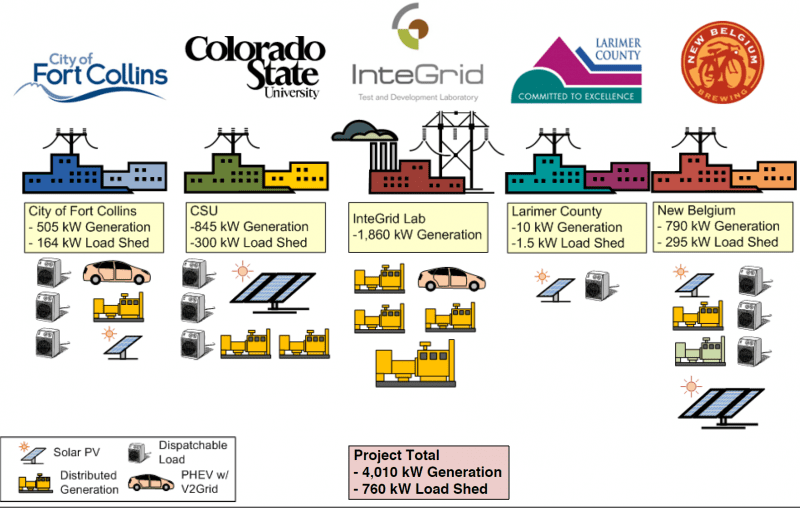
Key Fort Collins Microgrid features:
The Fort Collins Microgrid is part of a larger project known as the Fort Collins Zero Energy District, where the district plans to create as much thermal and electrical energy generation locally as it uses. The main goals are to develop and demonstrate a coordinated and integrated system of mixed distributed resources for the City of Fort Collins, reduce peak loads by 20%-30% on two distribution feeders, increase the penetration of renewables, and deliver improved efficiency and reliability to the grid and resource asset owners. The microgrid project involves multiple customers including the New Belgium Brewery, InteGrid, City of Fort Collins facilities, Larimer County facilities, and Colorado State University main campus facilities, as well as a variety of distributed energy generation technologies. It has received funding from the US Department of Energy and from various industry partners.
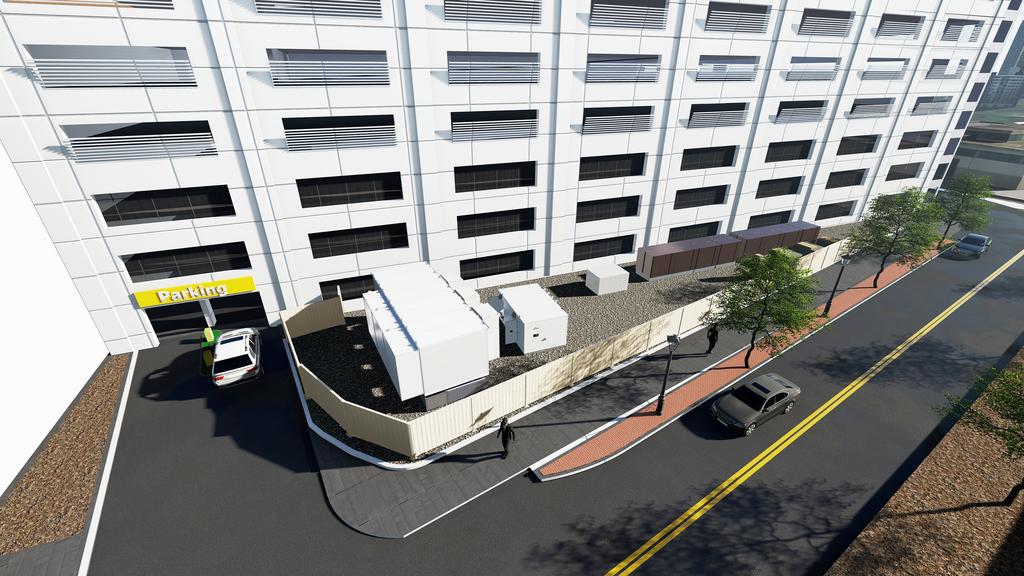
Key Tech Square Microgrid features:
Georgia Power, in collaboration with Georgia Tech, built a 1.5 MW data center microgrid at Georgia Tech’s DataBank data center. The Tech Square Microgrid, which was approved by the Georgia Public Service Commission, is being used to evaluate how a microgrid can effectively integrate into and operate as part of the overall electrical grid. Additionally, it serves as a living laboratory for Georgia Tech professors and students who use the asset to gather data on controllers, cybersecurity devices, and energy economics. The microgrid provides Georgia Power with insight into how smart energy management systems can interact with the grid to achieve optimal utilization of energy.
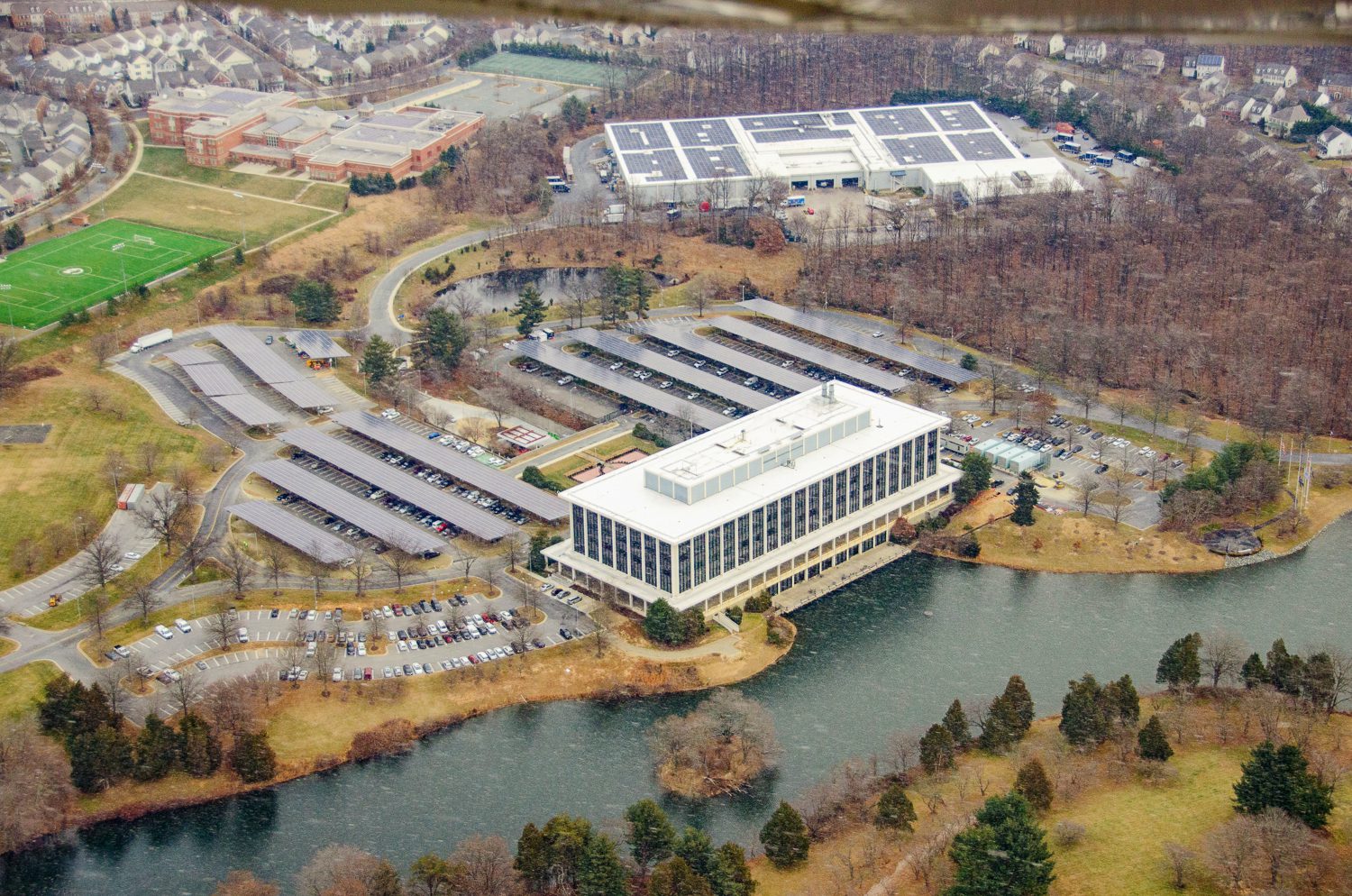
Key Montgomery County microgrids features:
Montgomery County has installed two microgrids to allow key facilities to operate without any power from the utility grid. The microgrid initiative was prioritized because of the County’s history with extended large-scale power outages due to major storms and the County government’s goal of reducing greenhouse gas emissions 80% by 2027. When considering building microgrids, the Department of General Services focused on facilities essential for the continuity of public services during disasters or other events when those services are needed most. Montgomery County has finalized the construction of its first two microgrids, leveraging its innovative energy purchasing regulations to create a public-private partnership.

Key Princeton Microgrid features:
When Hurricane Sandy hit New Jersey in October 2012, Princeton’s Cogeneration Plant Microgrid was able to generate power for campus, while also maintaining steam and chilled water. The University served as a an emergency shelter while neighboring towns remained without power for days. The generator produces up to about 15 megawatts, which is only slightly less than the university typically uses. When demand is low on campus the turbine supplies all of the university’s power. At other times, some power is drawn from the grid. Sometimes, the university even supplies power to the grid.
Over time, the cogen system had two very important alterations. One was a change to make it capable of running entirely independently of outside grid power; this turned it into a microgrid. The second was the addition of renewable energy in the form of a solar system.

Key Brooklyn Microgrid features:
Brooklyn Microgrid (BMG) is a network of New York City residents and business owners who support local solar energy production. The network connects people in New York City who own solar arrays with people who want to purchase local solar energy. Participants access the local energy marketplace through the BMG mobile app, where they can choose to buy local solar energy credits. Solar owners sell their excess solar energy to the marketplace where consumers purchase the available solar via auction. Consumers use the mobile app to select their energy sources and to set their daily budget for purchasing local energy in the marketplace. Solar owners can choose whether they want to sell their excess solar energy to the marketplace or continue to net meter with Con Edison. Additionally, the BMG provides users with control over where their energy is sourced.

Key Fort Sill Microgrid features:
The Fort Sill Microgrid, installed for the U.S. Department of Defense at Fort Sill, Oklahoma, demonstrates a full-scale microgrid with seamless transfer between islanded and grid-connected operation, energy storage, renewables integration, load shedding, and power export. This project took the state-of-the-art microgrid controls as a starting point and built on them to improve the level of maturity and to serve as a demonstration project. A significant innovation was adapting a conventional generator control system for monitoring and control of a microgrid with generators and inverters, as opposed to developing the system-level controls and monitoring software from scratch.
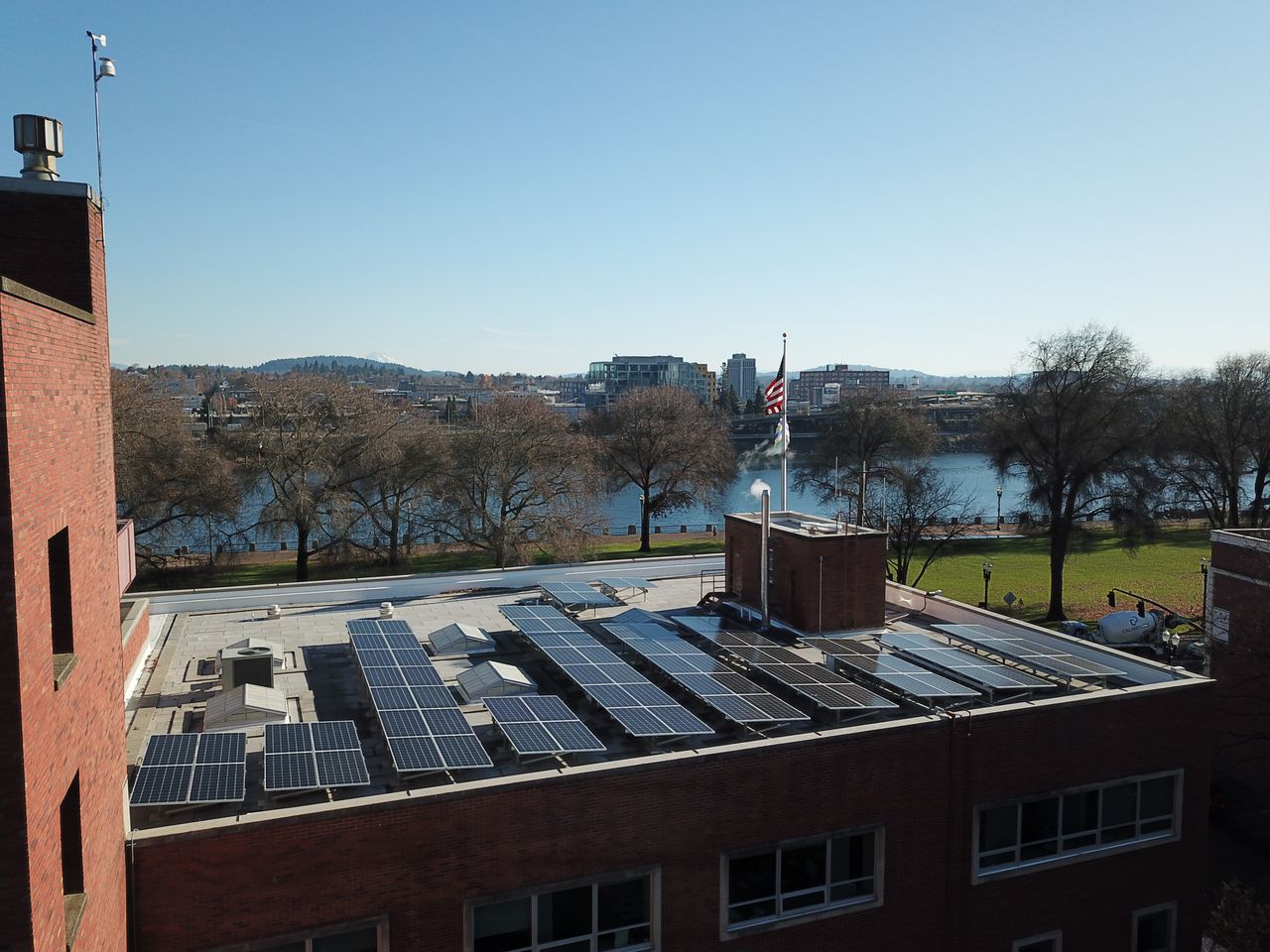
Key Beaverton Microgrid features:
The City of Beaverton and Portland General Electric (PGE) collaborated on a microgrid that is connected to PGE’s grid. The Beaverton Microgrid supports resilient and clean power at the Beaverton Public Safety Center, which houses the Beaverton Police Department and Emergency Management program and provides essential community services, including private space for victim interviews, evidence storage areas, and dedicated space for emergency operations. The seismically stable building is designed to remain fully operational and provide uninterrupted emergency services to the community after a major earthquake or other disaster. The building is designed to maintain power, even if there are outages in the immediate vicinity, due to its connection with the PGE-supported microgrid that enables electricity to be generated onsite.
The latest in clean local energy
Learn about our innovative projects and initiatives on our blog, and see what others are reporting about our important work.
The Clean Coalition was a partner organization for this webinar, which took place on 18 December 2025 at 10am.
Read MoreThis podcast episode of Energy Central's "Power Perspectives" welcomes Craig Lewis, Founder and Executive Director of the Clean Coalition, to explore how local solar and storage can flatten the duck curve, cut costs, and build a more resilient grid.
Read MoreThe Clean Coalition presented during this in-person gathering, held on Friday, 5 December 2025 from 3:30–5:00 pm PST at CEC’s Environmental Hub, 1219 State St Suite A, Santa Barbara, CA 93101.
Read More